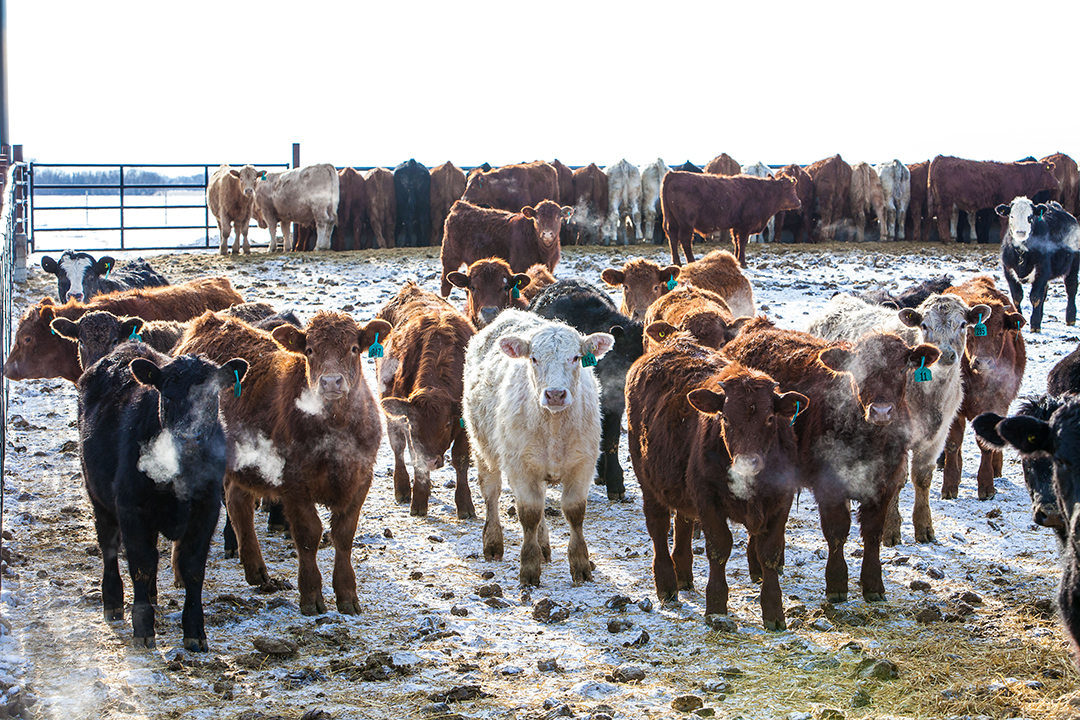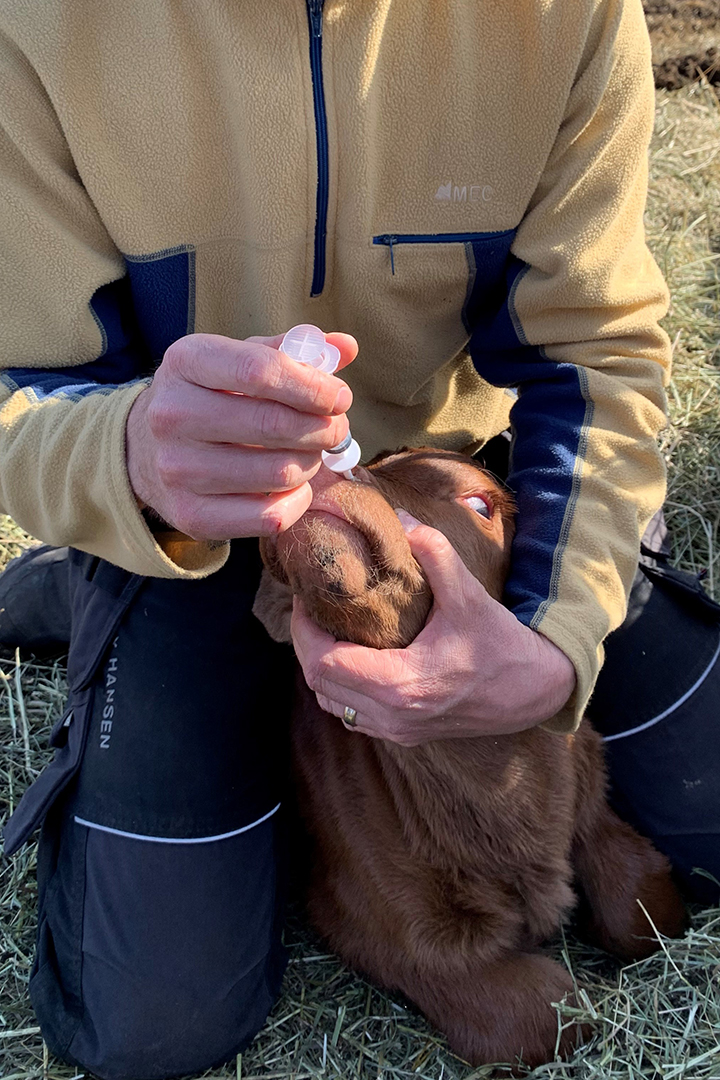
What’s the best approach to boosting calves’ immune response?
A Western College of Veterinary Medicine (WCVM) study co-led by Drs. Nathan Erickson and John Ellis is investigating whether different vaccine prime-boost approaches can help calves develop a better immune response against pathogens associated with bovine respiratory disease.
By Jessica Colby
“[Bovine respiratory disease is] the number one cause of morbidity, mortality and production losses in the feedlot system,” says Erickson, an associate professor and beef cattle researcher in the WCVM’s Department of Large Animal Clinical Sciences. “That’s why we work so hard trying to control it.”
While challenge studies often target one virus, this particular study includes three viral pathogens that are common at weaning: bovine coronavirus, bovine respiratory syncytial virus (BRSV) and bovine parainfluenza virus type 3.
Developing an effective prime-boost program is important for calves because calves typically have high circulating maternal antibodies when they are administered their first vaccine. Calves get their initial immunity from ingesting colostrum, the first milk produced by their dams. Colostrum is rich in maternal antibodies that are absorbed by the calf’s digestive system and directed into the animal’s bloodstream — a process called passive transfer of immunity.
But the presence of these maternal antibodies blocks the immune response to systemically delivered/injectable vaccines, which is why the industry has moved toward mucosal priming of young calves.
In the study’s first phase that took place in spring 2021, the team vaccinated 20 calves with a mucosal (intranasal) vaccine on the same day that they were born. Then, the calves were randomly placed into one of two treatment groups for their second (booster) vaccine: one group of calves received an inactivated vaccine while the second group received a modified live vaccine.
In phase two, which took place during weaning last fall, the researchers challenged the same calves with the three viral respiratory pathogens simultaneously.
“When calves enter the feedlot, they’re going to be exposed or likely be exposed to multiple viruses — whether it be one, two or three,” says Erickson. “So, we’re hoping that our results from the small challenge study will provide results that will better mimic what would happen in the field.”
As Erickson explains, the team is comparing two types of vaccine protocols. The study’s first vaccine delivery method is homologous, which involves the same vaccine type — modified live vaccines — for both prime and boost vaccines. The second method (heterologous) includes changing the vaccination route as well as boosting with an inactivated vaccine rather than a modified live vaccine.
“In our case, we’re changing [vaccine delivery] route, so we’re changing from intranasal [vaccines] for the first dose to injectable [vaccines] for the second dose, and that’s in both groups,” says Erickson.
He adds that the team used a “heterologous” approach with one group of calves that received an inactivated vaccine instead of a modified live vaccine. These types of vaccination protocols have been previously used in human health for protection against diseases such as tuberculosis and human immunodeficiency virus (HIV).
The heterologous approach has also been used to help people develop a stronger immune response against SARS-CoV-2, the virus that causes COVID-19.
“You have people talking about getting the AstraZeneca [vaccine] and then following up with the Pfizer-BioNTech vaccine, so that would be a type of heterologous prime boost there as well,” says Erickson.
“Sometimes when we use heterologous prime boost … we get a more robust immune response than we do when we give the same vaccine two times in a row. You still get a boosting response using the same vaccine, but sometimes you get a greater response with greater memory as well for the immune system.”
Injectable vaccines given through injection during the first few months of life are less effective because the presence of maternal antibodies contained in colostrum blocks the response to the vaccine.
“That’s why we’re starting to use mucosal vaccination, because mucosal vaccination will bypass the blocking effect of the maternal antibody,” says Erickson, who has previously worked on two challenge studies addressing BRSV and bovine viral diarrhea in beef cattle.
Erickson adds that this study will further contribute to the previous work he has done as well as provide new information for pathogens that haven’t been previously studied.
Funding for this study has been provided by the Saskatchewan Agriculture Development Fund, Beef Cattle Research Council, Saskatchewan Cattlemen’s Association and Alberta Beef Producers.
Jessica Colby of Montmartre, Sask., is a University of Regina journalism student. She worked as a WCVM summer research communications intern in 2021.

